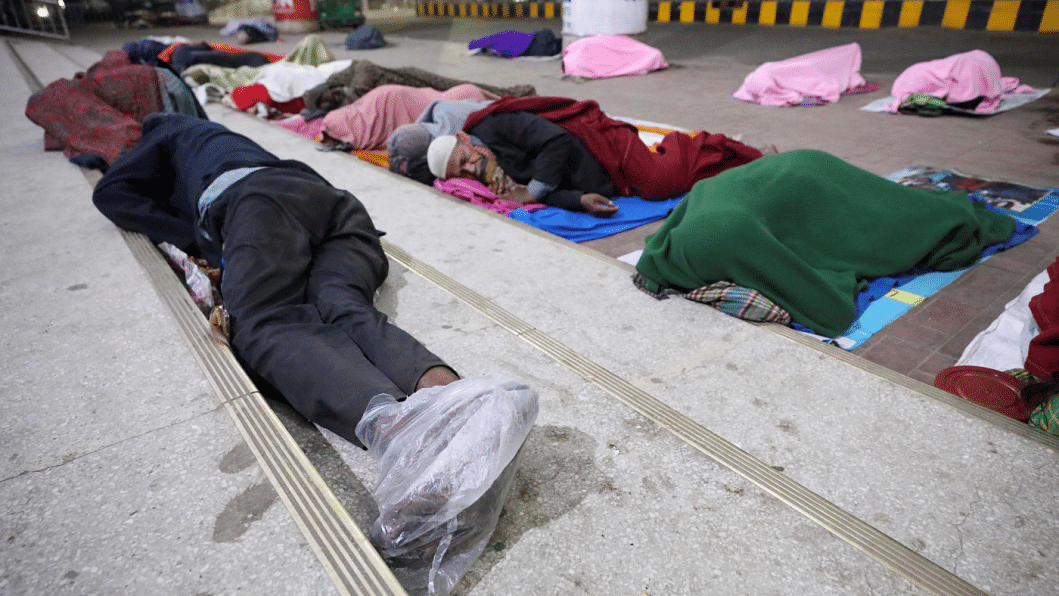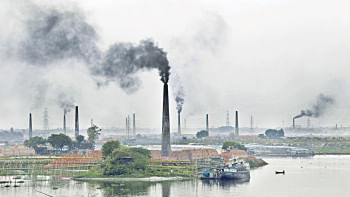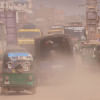The cold doesn't kill people. Bad policies do.

One of my core memories as a child was of visiting my hometown in North Bengal, where my father would take me out onto a street and point to a space on the horizon. That was where, as a little boy, he had sometimes caught sight of the outline of the Kanchenjunga mountain on a clear day, and his grandmother swore that back when she was young, it was fully visible on winter mornings.
I'm still unsure if I had actually seen that famous outline or if I had imagined it, but I can tell you for certain that it's no longer there – winter fog, building development, air pollution, and rising temperatures mean that sight is lost forever.
In fact, despite the mild cold wave the country has already experienced this winter, the truth is that temperatures in Bangladesh have steadily been rising due to the climate crisis. The fallout from this has been researched extensively, and vulnerable populations have already started to feel its impacts in the form of erratic rainfall, sudden floods, tidal surges, more regular cyclone cycles, increased water salinity, extreme temperatures, and more.
Be that as it may, it also cannot be denied that people have faced hardships this winter. This daily has printed some heartrending images of homeless people trying to fight the cold on the streets of Dhaka, with one person even curling up inside a sack in a desperate attempt to stay warm. We heard of how people lit fires to warm themselves and ended up with burn injuries, and how children crowded hospitals with winter-related diseases like pneumonia.
This is not exactly a new phenomenon. A joint research paper from Calgary University and KUET found that, every year, an average of 104 people die from cold and cold-related diseases in Bangladesh. The worst winter was that of 2011-2012, which saw 214 deaths, while the "best" was in 2016-2017, where only 18 people died. Unfortunately, the numbers rose again in 2020-21 with 52 deaths, the majority of which occurred in districts in Rangpur and Barishal divisions. And while we cannot yet ascertain this season's impacts, there have been multiple reports of similar cold-related deaths as well.
It seems grossly inappropriate that in a country on its way to achieving middle-income status, and which has spent millions of its own funds in mega infrastructure projects, there are still people who are, essentially, dying from poverty. The majority of people who die from cold-related issues are either homeless or can't afford to repair their homes for winter, and sometimes cannot even afford a blanket or shawl to protect themselves at night. The rising costs of healthcare also exclude the poor from getting proper treatment for cold-related illnesses.

Even after a few decades of development, and especially given the fact that the temperatures experienced are not unusual events, why are we still failing to support vulnerable populations during winter? While every year we see programmes to distribute warm blankets, both from the government and community organisations, what is concerning is the lack of long-term solutions with regard to shelter and healthcare.
This is all the more worrying when you consider that Bangladesh is facing complex and interconnected climate-related worries that can be intensified during certain seasons, but which cannot be dealt with on a "when we have to" basis.
Take, for example, our struggle with air quality during winters. In December 2022, Dhaka's air quality was worse than that of New Delhi's on two separate occasions. Winter smog has now become a common occurrence in South Asia – usually made up of a toxic concoction of vehicle exhaust, smoke from brick kilns, dust particles from construction sites, etc. Indoor pollution is also exacerbated in winter, since the colder and drier air traps more harmful particles.
According to World Bank estimates, air pollution kills around 80,000 people a year in Bangladesh. In 2019, it was the second largest cause of deaths and disabilities in Bangladesh. Yet, there has been very little effort to seriously tackle the issue. While the Kathmandu Roadmap for improving air quality in the Indo-Gangetic Plain and Himalayan Foothills – which was drawn up last month in a meeting of delegates from Bangladesh, Nepal, India, and Pakistan – is a step in the right direction, only time will tell how serious the countries are about translating policy into action.
One study found that living in houses made of corrugated tin, especially on roofs, can drive temperatures up by as much as 12 degrees Celsius, since the material traps heat during the day. But when it's cold, tin has the opposite effect, acting as a poor insulator. This may explain why, despite the fact that cold waves have not visibly worsened, many vulnerable people in the country are less equipped to handle them than before.
At COP27, Bangladesh stressed on its need for USD 230 billion over the next 27 years to enhance adaptation capacity. In the National Adaptation Plan, it is heartening to see that the first goal is to ensure protection against climate change variability – and that extreme temperatures, including cold, are included among the climate risks we need to prepare for. The NAP also focuses on climate-resilient agriculture, climate-smart cities, and conservation and biodiversity.
But just how long will these steps take to become reality? Certain districts are already in the grips of another mild cold wave, and we will have to accept that erratic climates are now the new norm.
Are there initiatives being implemented right now to protect the most vulnerable members of society? Will there be more Ashrayan projects for the homeless – ones that actually deal with the (literal) cracks in the initiative? Will the capacity of local hospitals to deal with seasonal diseases increase? Will energy prices be affordable enough for people to accommodate seasonal needs? Will steps be taken against the country's worst polluters?
We can no longer be satisfied with ambitious long-term plans and policies that run the risk of being confined to the paper they have been put down on. On one hand, Bangladesh is known to be a climate leader. On the other, hill-cutting, land-grabbing and environmental destruction continue unabated, and there seems to be very little awareness of the far-reaching impacts such actions can have, whether on soil erosion, winter pollution or heat stress.
If the authorities can allow hotels to be built on Indigenous land, if water bodies can be choked by pollution from plastic factories and tanneries, and if even government bodies can plan to cut down trees in reserve forests to build roads – is it any surprise we need some reassurance about their intention to deal with seasonal climate issues that ultimately impact vulnerable populations the most?
Shuprova Tasneem is a member of the editorial team at The Daily Star. Her Twitter handle is @shuprovatasneem

 For all latest news, follow The Daily Star's Google News channel.
For all latest news, follow The Daily Star's Google News channel. 












Comments